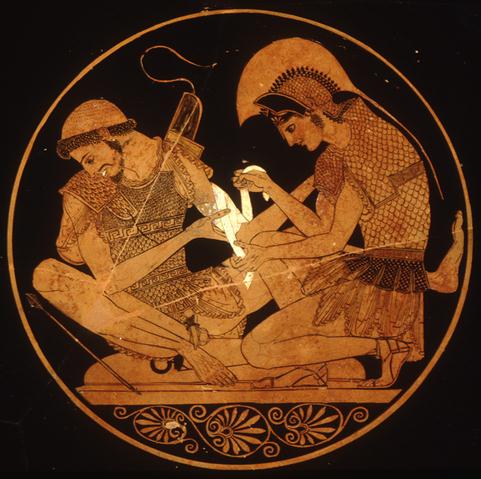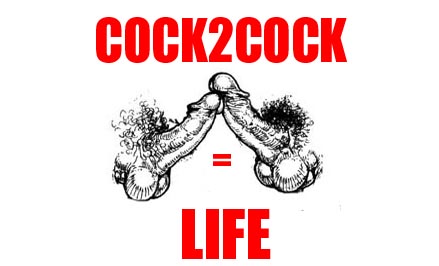




Men, War, Promiscuity, Affluence, and AIDS






Men, War, Promiscuity, Affluence, and AIDS

Men, War, Promiscuity, Affluence, and AIDS
7-19-2007
The estimable Craig Timberg had an article on July 13 in the Washington Post about the relationship between affluence and AIDS in Africa.
Here are the opening paragraphs:
In Zimbabwe, Fewer Affairs And Less HIV.
By Craig Timberg
Washington Post Foreign Service
Friday, July 13, 2007; Page A01
CHITUNGWIZA, Zimbabwe -- It's not only the prices of bread and eggs that are out of control in Zimbabwe, land of 4,000 percent inflation. For the man inclined to cheat on his wife, these are trying times. Keeping a mistress, visiting a prostitute or even taking a girlfriend out for beers is simply becoming too expensive, men say.
But their strain is Zimbabwe's gain in its fight against AIDS. Alone among southern African countries, Zimbabwe has shown a significant drop in its HIV rate in recent years. A major reason, researchers say, is the changing sexual habits of men forced to abandon costly multiple relationships.
"Those extramarital relationships, they're getting tough to sustain," said Thomas Muza, 37, who is struggling to support his wife and a mistress on the shrinking value of a math teacher's paycheck. Worth $50 a month at the beginning of June, it's now worth $17 and falling almost every day.
AIDS activists and some researchers long blamed the continent's high poverty rates for its unusually widespread HIV epidemics, arguing that poor medical care and hunger made Africans especially vulnerable to the virus, while financial need accelerated its spread by pushing women into prostitution.
Yet Zimbabwe's experience shows that the connection between AIDS and economics is not nearly so straightforward. The country has made strides against HIV during eight years of steep recession. Wealthier neighbors such as South Africa and Botswana, meanwhile, have struggled to curb new infections despite much higher levels of development and massive spending on the disease.
Many researchers now suspect that economic vitality -- expressed in rising truck traffic, burgeoning bar scenes and widening income disparity -- encourage the behaviors that fuel a sexually transmitted epidemic. But as men get poorer, they pare back their relationships, making them less likely to contract or spread HIV.
...
[emphases mine]
Again, that's just the beginning of the piece; you can go to the Post's site and read the rest of the article -- which is very good, and far smarter than most AIDS reporting in any newspaper.
Including and most especially the New York Times.
Now, this is the third Timberg article for the Post we've looked at here on the Alliance.
Excerpts from the first can be found in this thread: Multiple Partners Drive HIV Epidemic in Southern Africa -- and Elsewhere; European destruction of MC MANHOOD rituals and European distribution of condoms blamed;
and from the second here: Uganda's Message of Fear, Fidelity Diluted by Western Remedies; HIV Rate Rising.
All three articles by Timberg and the accompanying posts are important.
Because what Timberg has been doing in his reporting has been to get away from the old, ideologically-based AIDS prevention models -- as in poverty causes AIDS, gender inequality causes AIDS, homophobia causes AIDS, war causes AIDS, stigma causes AIDS -- none of which are true;
and instead, start looking at EVIDENCE-based models of AIDS prevention.
And when we start looking at the evidence, what we see is that HIV / AIDS is a disease of risk behavior.
Not, for example, poverty.
To the contrary.
The findings that Timberg is reporting demonstrate, as have other studies, that in Africa, as elsewhere, AIDS is a disease of relative affluence.
That actually AIDS has been hitting hardest among people who are better off.
Not people who are brutally poor.
Because, as he explains in the article, people who are brutally poor can't afford to be promiscuous.
Not at least in Zimbabwe and many other African countries.
People are actually more promiscuous when they have some excess cash.
And promiscuity is what transmits HIV.
Not poverty.
And not, as we'll see, war.
What about in America?
In America, HIV / AIDS is found primarily in two groups:
1. Gay and other "men who have sex with men" -- MSM; and
2. Injection drug users -- IDU.
Although it depends on whose figures you look at, and how they're interpreted (these figures are from the CDC via avert.org), when looking just at men, MSM constitute at least 59% of the cases in America; and then there are MSM who are also IDU -- they're another perhaps 8%.
So that's minimally 67%.
And I say minimally because those figures are from a CDC survey conducted in 2005, and it's lacking data from some of the most crucial states, including I believe, New York and California.
What would happen to those figures if you factored in the MSM in NYC, LA, and SF?
The percentage of MSM would go up.
Why do I say that?
Because in a city like LA, for example, 75% of the cases are among gay men.
And that's not counting the IDU / MSM overlap.
Be that as it may, in the CDC survey of 2005, IV drug users only accounted for 20%.
The rest were via hetero contact -- in theory.
So, and again, in the 2005 survey, MSM account for minimally 67% of the cases.
That's a lot -- and almost certainly understated.
And although some gay and bi men are poor, most are not.
Even when talking about drug users, you can't assume that the people are poor.
For example, I had a friend who was a partner in well-known accounting firm.
He made in the six figures.
He was a gay-identified man -- MSM.
And he was also, surprisingly, an IDU.
And he got infected by sharing needles.
He wasn't poor -- not by a long shot.
But he still got infected.
So with HIV, what matters is not social class, but risk behavior.
You can be poor --
but if you're not sharing needles and you're not doing anal and you're not the female sex partner of someone who's doing either -- you won't get infected.
Conversely, you can be rich;
but if you share needles, or engage in anal, you probably will get infected.
Because what we've seen with HIV, is that when you look at a group of people whose behavior puts them at risk, over time they ALL get infected.
That's what happened in the hepatitis B cohort which Dr Chin discusses in his book, and which we reported on in How effective have MSM condom campaigns actually been?
Over time, all the guys in that cohort *whose behavior put them at risk,* got infected.
Now, speaking of Dr Chin, two recent studies have vindicated -- and "vindicated" is the word used by the New York Times in an article titled India, Said to Play Down AIDS, Has Many Fewer With Virus Than Thought, Study Finds -- to describe what happened --
that is, two recent studies vindicated Dr Chin's assertion that the number of cases UNAIDS claimed to exist in India was vastly inflated.
This is something I'm going to talk about in more depth in an upcoming post, because it's really important.
For now, let's just note that what Dr Chin said in his book was that many "AIDS activists," AIDS bureaucrats, and UNAIDS in particular, were inflating their projections about AIDS because they have an agenda.
Their agenda being of course to secure more funding and expand their influence.
But they were also using AIDS and fear of AIDS to try to mobilize societies against what most people would agree are indeed problems -- that is, war, poverty, gender inequality, homophobia, etc.
In doing that, however, groups like UNAIDS were insisting that "generalized" epidemics -- such as we see in Africa, and which are truly devastating -- were going to arise in countries in which they could not arise.
BECAUSE THE RISK BEHAVIORS WERE NOT AND ARE NOT THERE.
So Dr Chin was speaking purely to the *evidence.*
The evidence based on risk behavior.
And he's been doing so for years, even though doing so hurt him professionally in the epidemological and AIDS prevention communities.
For example, here's what Dr. Chin said in a poster presentation in Taipei in 2002 titled "Understanding the Numbers and Basic Epidemiology of the HIV/AIDS Pandemic."
In that poster, Dr Chin pointed out that there are:
Two HIV/AIDS Paradigms
1. In the absence of effective HIV/AIDS prevention and control programs, it is just a matter of time before extensive HIV epidemics will eventually occur in all current low HIV prevalence populations.
...
2. HIV prevalence can only rise to the levels permitted by the prevailing patterns and prevalence of HIV risk behaviors and therefore epidemic spread of HIV cannot and will not occur in populations with low levels of HIV risk behaviors.
Which paradigm is correct?
The second is correct.
Take away the risk behavior, and the disease no longer spreads.
That's what happened in Zimbabwe.
There was a drop in new infections when guys could no longer afford to keep mistresses or use prostitutes.
So the risk behaviors were promiscuity and infidelity.
Male circumcision -- MC -- certainly matters, but when infidelity declined, so did HIV prevalence.
Dr Chin in 2002:
Epidemic HIV Transmission in Most Heterosexual Populations Unlikely
In populations where there is a low risk pattern and a low prevalence of heterosexual-risk behaviors, epidemic heterosexual HIV transmission will not occur, no matter how poor the population may be, what proportion of the male population may be circumcised, and what HIV subtypes may be present!
So: "low prevalence of heterosexual risk behaviors" trumps male circumcision.
And that's obvious.
The pathogen -- the virus -- can't spread without the risk behavior.
Yes, the uncircumcised penis is vulnerable -- very vulnerable.
But that vulnerability cannot be realized unless the penis is put in a vagina or rectum laden with HIV.
And that vulnerability will not translate into an epidemic unless that penis, which is now infected with HIV, ejaculates into another vagina or rectum.
So it's risk behavior -- in this case promiscuity -- which is crucial.
Thus the Ugandan notion of "zero grazing."
Don't stray from your (uninfected) partner, and you won't get sick.
What does this have to do with us -- that is, Men who Love Men, living on the whole in the Western, very affluent, world?
For MSM, the risk behavior is anal.
No anal -- No AIDS.
It's that simple and that basic.
Yet the gay establishment and the gay male AIDS prevention establishment have opted to protect and defend and indeed extol anal -- and promiscuity -- while pushing condoms.
And we can see what the outcome has been:
American MSM HIV prevalence is at 25% and rising.
Because unless they're used consistently -- and that means for EVERY act of anal -- condoms are WORSE than useless.
As Timberg said of a guy in Uganda:
Sometimes he used condoms, sometimes not -- a common but uneven approach that research shows almost entirely undermines their value.
Right.
Inconsistent use is as bad as -- some, like Dr Green, argue that it's worse than -- no use.
Because, as President Museveni of Uganda says, the condom offers false hope.
And based on that hope, people not only have more partners, but they're less choosy about whom they sleep with and more likely to engage in highest-risk sex -- which in the case of MSM, is anal.
Indeed, and predictably, another recent study found that women who were given a so-called female condom, which they could use whether the man used a condom on his penis or not, actually had a HIGHER rate of infection than the control group:
Double protection doesn't improve HIV prevention
7/12/2007
NEW YORK (Reuters Health) - For prevention of HIV infection, there's no advantage to using a diaphragm as well as a condom during sex, according to investigators hoping for an effective female-controlled method of avoiding AIDS.
Dr. Nancy S. Padian and her colleagues tested the theory that covering the cervix with a diaphragm and still using a condom would enhance protection against HIV, in a medical trial involving some 5000 sexually active women living in South Africa and Zimbabwe.
Those randomly assigned to the "intervention" group were given diaphragms and lubricating gel along with condoms, while condoms alone were dispensed to the "control" group.
The women were re-evaluated and counseled about risk reduction and "condom negotiation" during quarterly follow-up visits for up to 24 months.
Despite those efforts, HIV infection rates were high in both groups, the investigators report in an early online issue of The Lancet medical journal. The infection rate was the equivalent of 4.1 cases per 100 women per year in the intervention group and 3.9 cases per 100 woman-years in the control group.
Padian, from the University of California in San Francisco, and her team found, unexpectedly, that fewer women in the intervention group used condoms than in the control group -- 53.5 versus 85.1 percent.
"Female-controlled methods of HIV prevention are urgently needed," Dr. Ronald H. Gray and Dr. Maria J. Wawer, at Johns Hopkins University in Baltimore, write in an accompanying commentary.
Decades after the start of the HIV epidemic, the only proven prevention methods in adults depend on male cooperation. For that reason, the editorialists emphasize that the "disappointing results" reported from the current study "must not discourage the testing of other novel approaches."
[emphasis mine]
Dr. Nancy Padian, who was the lead researcher on this study, is by the way a staunch opponent of the ABC approach used so successfully in Uganda and now being adopted by other countries.
Yet the results in her study were what Dr Green or any other proponent of ABC could have predicted:
The more condoms, the more AIDS.
That's just the truth.
The article said that Padian et al found the results to be "unexpected" ;
but I have to ask: Why?
Because many studies, including these which I mention in the Timeline:
Richens, J., Imrie, J., & Weiss, H. Sex and death: why does HIV continue to spread when so many people know about the risks? J. of R. Statist Soc A 2003;166, 207-215.
Kajubi P, Kamya M, Kamya S, Chen S, McFarlandW, Hearst N. Increasing condom use without reducing HIV risk: results of a controlled community trial in Uganda. J Acquir Immune Defic Syndr 2005;40:77-82
-- have demonstrated the disinhibiting effects of condoms.
And in point of fact, the countries in southern Africa where condoms have been most aggressively promoted are the countries with the highest rates of HIV infection and AIDS.
That's also true of the gay male community in America and elsewhere in the West.
As I just said, HIV prevalemce among American MSM is at 25% and it's rising.
Uganda, which didn't rely on condoms, saw a huge and steady drop in prevalence for years.
While American MSM who avoided anal -- were by and large untouched by HIV / AIDS.
Condom promotion does NOT work.
Primary behavior change -- as in don't do anal, don't be promiscuous -- does.
Then there's this quote from the Lancet:
"Female-controlled methods of HIV prevention are urgently needed," Dr. Ronald H. Gray and Dr. Maria J. Wawer, at Johns Hopkins University in Baltimore, write in an accompanying commentary.
Yet the A and B of ABC ARE FEMALE-CONTROLLED.
It's the woman saying NO to sex; and saying NO to promiscuity.
She's telling her husband or boyfriend -- Don't cheat.
Under ABC, the women, rather than being passive and acted upon, become actors in their own right.
It's nuts:
The same people, like Padian, who claim that they're deeply concerned about gender inequality, refuse to endorse giving Women the power to say NO.
And they refuse to endorse that in the name of what is a Western sexual revolution.
They don't want women to say NO to sex.
They want women to be "free" to be as promiscuous as men.
But the reality in Africa is that promiscuity is unhealthy for both Men and Women.
Why not tell people that?
As the Ugandans did:
Part I: Affluence and AIDS
Part II: Condoms and AIDS

Instead of imposing a Western sexual agenda -- on Africans?
Further:
If gender inequality causes AIDS -- why is HIV prevalence so low in fundamentalist Islamic countries?
Those countries are rife with gender inequality.
As is well-known.
The Western press is full of reports of mistreatment of women in places like Afghanistan.
And it is without question appalling.
Yet the same people who become indignant when they see a woman wearing a burqua will insist that gender inequality causes AIDS.
But there's no evidence for that.
Fundamentalist Moslem countries have massive gender inequality.
But they don't have AIDS.
Why?
Levels of male-female promsicuity are extremely low.
And anal penetration is severely punished.
What about gender Equality?
Which some fundamentalist Islamists claim causes AIDS.
Does that cause AIDS?
NO.
Israel, which is in the same part of the world, and which has European-style gender equality, also has a VERY low rate of HIV.
It's not gender inequality.
It's not gender equality.
It's RISK BEHAVIOR.
Which for heterosexuals in Africa is promiscuity of a certain sort, known as concurrency -- having more than one partner at the same time;
and lack of male circumcision.
That's the risk behavior.
And to the extent that social class enters into the equation, affluence is not protective.
It's actually dangerous.
And since we're talking about poverty and gender inequality, we might as well look at war too.
Which AIDS activists and academics like Padian have long insisted "cause AIDS."
Yet the EVIDENCE is against them:
Wars don't fuel African HIV crisis: study
By Will Dunham
Thu Jun 28, 2007
WASHINGTON (Reuters) - War, refugee crises and large-scale rape of women in sub-Saharan African nations have not spawned higher HIV infection rates in this region hard hit by AIDS, according to a study contradicting a common belief.
Writing in the Lancet medical journal on Thursday, researchers said they tracked HIV infection rates in seven sub-Saharan nations beset by conflict -- Burundi, Democratic Republic of Congo, Rwanda, Sierra Leone, Somalia, Sudan and Uganda.
Of the 40 million people worldwide infected with the human immunodeficiency virus that causes AIDS, about 25 million are in the poor African countries south of the Sahara.
Running counter to a notion advanced by some experts that violence fuels the spread of HIV, the study found no evidence that infection rates rose in these nations during conflicts.
The study also found that the large numbers of refugees displaced by war have not multiplied HIV in the places to which they have fled, and that large-scale rapes during conflicts, while heinous, have not increased overall HIV rates.
"Assumptions that make intuitive sense should be properly researched before being propagated as fact," said lead researcher Dr. Paul Spiegel, chief of the public health and HIV section for the United Nations High Commissioner for Refugees.
Spiegel noted that HIV infection rates may increase in areas affected by conflict, but not to the same magnitude as similar regions not engulfed in war.
"In the seven countries we examined -- again, this may not apply to all countries that experience conflict -- the conflict appeared to keep the level of HIV infection lower than surrounding countries or in other parts of the same country which were not in conflict," Spiegel said by e-mail.
"Every case of rape is abhorrent and must be cared for properly," Spiegel added. "At the individual level, the person is at risk of becoming infected with HIV. However, given simple epidemiology, this may not translate into an overall increase in HIV prevalence at the country level."
DISRUPTED HABITS
Under ordinary circumstances, he said, men may leave their families to work in urban areas, have sex with HIV-infected prostitutes and then return home only to infect their wives, or have numerous concurrent sex partners.
But because war limits people's mobility within countries, such transmission patterns may be disrupted, Spiegel said.
Some nongovernmental organizations have asserted that HIV infection rates are worsened in conflict zones.
A 2002 report by the group Save the Children titled "HIV and conflict: a double emergency," stated, "In war, HIV/AIDS spreads rapidly as a result of sexual bartering, sexual violence, low awareness about HIV, and the breakdown of vital services in health and education."
Spiegel said such claims may stem from incorrect interpretation of data or inadequate study methods.
But Gopa Kumar Nair, Save the Children's HIV and AIDS adviser, said the data underpinning the Lancet study may not sufficiently reflect the reality on the ground.
"Our experience from the field clearly shows that there is a huge link between vulnerability to HIV and conflict. We have seen community-based health systems breaking down," he said in a telephone interview.
Separately, the Global HIV Prevention Working Group, which is backed in part by the Bill & Melinda Gates Foundation, called for increased international support for AIDS prevention efforts with the aim of averting 30 million of the 60 million HIV infections expected to occur by 2015.
Findings:
Of the 295 articles that met our search criteria, 88 had original prevalence data and 65 had data from the seven selected countries. Data from these countries did not show an increase in prevalence of HIV infection during periods of conflict, irrespective of prevalence when conflict began. Prevalence in urban areas affected by conflict decreased in Burundi, Rwanda, and Uganda at similar rates to urban areas unaffected by conflict in their respective countries. Prevalence in conflict-affected rural areas remained low and fairly stable in these countries. Of the 12 sets of refugee camps, nine had a lower prevalence of HIV infection, two a similar prevalence, and one a higher prevalence than their respective host communities. Despite wide-scale rape in many countries, there are no data to show that rape increased prevalence of HIV infection at the population level.
[emphases mine]
So:
Notice first off that non-governmental organizations like Save the Children -- which depend for their fund-raising on hot-button issues like war and HIV -- continue to claim that there's a link even though NO EVIDENCE WAS FOUND OF SUCH A LINK.
"Never confuse me with the facts" is the motto of these "AIDS activists."
And there's a reason they don't want to be confused with the facts.
Here's Daniel Halperin, one of the lead researchers in the MC studies, talking about the problems facts create for AIDS activists -- this is from the same New York Times article about the vindication of Dr Chin:
"This [India] is a replay of what happened in Kenya," said Daniel Halperin, an expert on AIDS infection rates at the Harvard School of Public Health. When Kenya was more carefully surveyed in 2004, he said, its prevalence rate was halved, to 6.7 percent from the 15 percent that Unaids had estimated in 2001.
But Dr. Halperin said that AIDS-fighting agencies had such a stake in portraying the epidemic as an approaching Armageddon that they were hesitant to make revisions.
India's survey was finished last year, but Avahan, an AIDS group here financed by the Gates Foundation, refused to discuss the figures before their formal release, which has not been scheduled.
"If the total number of cases in the world is half of what you've been saying, that's a bitter pill to swallow," Dr. Halperin said. "So every year they lower the numbers a little bit, and retroactively change the estimates of what it used to be. It's sort of Orwellian."
"It's sort of Orwellian" says Dr Halperin.
Tell me about it -- I have a whole article on this site about the Orwellian use of language by the analists.
But here's the key sentence from Halperin:
AIDS-fighting agencies had such a stake in portraying the epidemic as an approaching Armageddon that they were hesitant to make revisions.
Right.
These people depend, FOR THEIR FUND-RAISING, "in portraying the epidemic as an approaching Armageddon..."
And that's why you hear about HUGE, GENERALIZED EPIDEMICS brought about through WAR, POVERTY, GENDER INEQUALITY, HOMOPHOBIA, STIGMA, ETC ETC ETC.
But what we're seeing from the EVIDENCE is that HIV / AIDS is a disease of AFFLUENCE and PEACE.
Oh yeah.
Because when people have a little more money and life is more peaceful, they can be more sexually active.
Even so, that wouldn't have mattered in southern Africa if Christian missionaries hadn't disrupted the MANHOOD Rituals which included MC -- male circumcision.
Wouldn't have mattered.
Similarly, though we don't recommend it, MSM in the US and EU who don't do anal and oral can be promiscuous.
We don't recommend or support that because promiscuity buys into an essentially MAN-phobic and MAN-LOVING-MAN-phobic ideology and cultural construct.
BUT -- when it comes to MSM HIV transmission, it's the ANAL.
And nothing else.
So:
If you want to prevent HIV / AIDS -- you have to go with the EVIDENCE.
And what Timberg has been doing through his articles for the Washington Post is to make that evidence understandable to the "general public."
That's very valuable and a great service.
Now, I know this is a long post, but there are lessons we need to learn from the accumulating EVIDENCE of what causes AIDS -- lessons which transcend this epidemic and indeed this little moment in time.
And the first thing we need to look at is promiscuity.
Because that's another aspect to Timberg's Zimbabwe story that's very important and more than relevant to us.
And that's the question of how promiscuous Men actually are.
And under what circumstances.
Very often I get email from guys saying, basically, Men are by nature promiscuous and have to be promiscuous.
Where does that idea come from?
It's actually an analist and pansexualist idea -- that promiscuity is built into the species and is unavoidable.
The analists and pansexualists like that idea and they very actively promote it -- I repeat, they promote it -- because it's a justification for "multipartnering" aka promiscuity, which they regard as a social good.
Despite all the social ills to which promiscuity has given rise.
Moreover, in point of fact, and as I keep telling you, both historically and cross-culturally what we see is that "Men who Love Men" -- and I use that phrase because it's more ACCURATE than "men who have sex with men" in that it more accurately describes what has gone on historically and cross-culturally between Men --
Men who Love Men are NOT promiscuous.
Certainly not with other men.
And perhaps not with women either.
My foreign friend argues that promiscuity with women is an artifact of pseudo-masculinity.
That is, a construct of masculinity which is dictated by the culture, rather than arising from the Man's natural feeling about what it is to be a Man.
While the Naturally Masculine Man is not promiscuous with women -- and is bonded to a single male Warrior brother.
Now, it's difficult to know in our era, when the forces of heterosexualization have had such a huge impact globally, how promiscuous a Man who grew up under Natural Masculinity might choose to be.
But what the Zimbabwe article tells us is that promiscuity is -- at least often -- a function of affluence.
Affluence.
If that's so, what's the historic reality?
Well, for most of humankind's existence, the vast majority of people have been dirt poor.
At least as poor as poor people in Africa today.
Which means that although men might have had promiscuous impulses --
their ability to be promiscuous was, most of the time, very limited.
In addition, it was often and still is in many places very dangerous to be promiscuous.
Look for example at what happens in a country like Iran even today.
There both men and women can be executed by stoning for having sex outside of marriage.
Should we support that?
No, of course not.
But we need to be aware of the historic reality.
Not some buttboy fantasy.
So:
What's going on when analists tell you that men are by nature promiscuous is that they're saying that since gay males in the contemporary, heterosexualized, and very affluent West are promiscuous -- that's the way it's always been everywhere and forever.
Does that make any sense?
NO!
It's like saying that because people in the West live and work in skyscrapers, people have always lived and worked in skyscrapers.
Just not true.
Again, we live in a heterosexualized society, and, as my foreign friend points out, heterosexualization is a function of the extreme wealth of the West:
If there is no heterosexual society there would be no homosexuals. And no heterosexuals either. Male-male sex is isolated only because in the western society, its spaces and its customs are completely heterosexualised (i.e. made mixed gender with pressures to be heterosexual). But heterosexual spaces are themselves unnatural --- and it was only through financial and technological power brought by industrialisation that the western society could create such an artificial unnatural heterosexual environment.
"financial and technological power"
That financial and technological power is something NEW in history.
No other society has had this level of affluence and technological power -- that is, control over the natural world -- over nature.
It's literally unprecedented.
Which is why we don't see the sort of promiscuity common among gay males in the West -- anywhere in history.
The orgies of ancient Rome -- the storied orgies of ancient Rome -- are as as close as you get.
But those orgies were limited to a tiny group of people in the extreme upper crust of Roman society.
Nor were they normative or common or in any way thought of as usual.
Roman writers regarded those orgies as decadent -- that is, as symptoms of social decay and personal weakness -- and the Roman authorities closed them down and imposed heavy penalties on the participants.
So: promiscuity, and most especially the sort of promiscuity that we see among gay-identified males and increasingly among nongay people as well in the affluent and heterosexualized West, is an HISTORICAL ABERRATION.
Translation: it ain't normal.
Nor is it natural.
It's a result of the radically-changed conditions of human life brought about by industrialization and heterosexualization.
Now:
Those of you reading this post who understand what we mean by heterosexaulization would probably agree that heterosexualization, which has resulted in the destruction of all-male (homosocial) spaces and the ghettoizing of same-sex desire, has not been, on the whole, beneficial to the species.
But most of you would still regard affluence per se as a good thing.
It certainly beats poverty -- at least most of the time.
But does that mean that every concomitant of affluence is good?
No.
For example, obesity.
Obesity is a by-product of affluence.
And obesity is dangerous.
As is promiscuity.
And this is not complicated.
If a concomitant of affluence is death -- be it physical or psychological or spiritual or all of the above -- it's a problem.
So: It's the unprecedented wealth of the West which makes possible the promiscuity of the West.
The mistake is in thinking that:
1. Promiscuity is therefore a social good; and
2. Promiscuity has been common throughout history.
Both assumptions are wrong.
I know for example that many of you look at the palestra -- the ancient Greek fight school where guys wrestled and fought nude -- as somehow resembling a modern-day gay bath-house or gym, with group sex in the sauna after every workout.

NO.
That's not what these Men did.
They put not just a high premium but a huge premium on sexual exclusivity and Fidelity.
So much so that it's very, very rare to hear of infidelity between Men in the ancient world.
Instead, the model presented over and over again is the Gilgamesh-Enkidu / Apollo-Hyacinth / Achilles-Patroclus / Harmodius-Aristogeiton / Alexander-Hephaestion / Nisus-Euryalus / Hadrian-Antinous model of devotion unto death.

|
Really common.
That model, which is by the way and by and large a military or WARRIOR model, is ubiquitous.
You encounter it everywhere in the ancient literature.
And you cannot just dismiss it.
To us it may be an alternative model.
But not to the MEN of the ancient world.
It was how they lived.
And it emerged from the Warrior Ethos.
And it's a model of Men *LOVING* Men which we can see is far healthier than the "MSM" model constantly paraded before us by the analists.
As David Winnie Hayes said about the Greeks,
The Sacred Band of Thebes was not known for casseroles and folded napkins nor did the priests of Apollo create a leper colony of sexually transmitted diseases...
That's correct.
Rather, these were aggregations of Masculine and Faithful Men.
WARRIORS.
That's how it was.
And it can be that way again.
If you have the COURAGE -- the BALLS -- to make it that way.
You need to find within yourself that Fighting Spirit which is the hallmark of Masculinity --
and get into this Fight.
Not for my sake.
But for your own.
Fact is you've been lied to -- we all have.
Lied to about things which are important.
About what causes AIDS -- easily the most frightening disease of the age.
About promiscuity.
About Fidelity.
About Masculinity.
About Men.
About, for example, Men and Fighting and Aggression.
Notice that war and civil conflict did NOT increase HIV prevalence.
Why not?
The researchers posited that "war limits people's mobility within countries" and disrupts transmission patterns found during peacetime.
That's fine so far as it goes, but here's another possibility.
As we saw in the MEND article about rebel Warriors in an oil-rich area of Nigeria, very often men at war, at least in so-called primitive societies, swear off sex -- at least with women.

If the guys aren't having sex with women -- they can't give or get HIV.
And if the guys are having sex with each other phallus to phallus -- they can't give or get HIV.
Particularly not if it's done in a context of Warrior Fidelity.
This is in no way far-fetched.
The Times just had a piece on the revival of lacrosse among native American peoples -- American Indians -- and noted that many of the teams, which are primarily made up of adolescents, are trying to observe traditional values -- which they regard as spiritual values.
For example, if a girl touches a boy's lacrosse stick, the stick is put away and not used for seven days -- if ever again.
The Times:
American Indians have played lacrosse for centuries. Missionaries documented their contests as long ago as the 1630s. Such early matches could involve hundreds of men, and last for days in fields spanning miles. Players often used sticks carved from trees and balls fashioned from wood, stone or rawhide. The games were considered a rite of passage for young men, attesting to their strength and power.

Pickup games never disappeared from reservations, where lacrosse was often considered a gift from the Creator and games were played to heal the sick, settle conflicts and even prepare for war. ...
Onondaga BraveWhile the teams do not wear native clothing or have tribal sideline chants, the players say they adhere to the spirit of the game played hundreds of years ago.
For instance, the Onondaga Red Hawks and the Tonawanda Braves do not allow girls to play, and male players on some other teams forbid women to touch their sticks for fear such contact could cost them the protection of the Creator during games. If a stick has been touched by a woman or girl, some native lore says it must be put away for seven days, and some Tonawanda players have been known to discard or give away such sticks.
...
Onondaga Sticks[emphases mine]
So the girl's touch has made the stick "unclean."
We may be put off by such a custom and such a notion.
But its purpose is to preserve the all-male space.
It limits the interaction of the girls with the Warriors -- which is what the players actually are.
And it also unabashedly treats the lacrosse stick as a phallic symbol.
Which is not to be lightly handled by a girl or woman.
In doing that, the custom transmits a non-promiscuous message to both the boys and the girls.
It says that the stick -- the weapon -- the phallus -- which has the capacity to bring both victory and life -- is sacred.
It's a gift from the Creator.
And must be treated as such.
If the phallus is sacred -- then sex is sacred.
And now we're in the realm of Danielou, and the idea of the phallus as the sacred symbol of man's creative power.
Sacred, again, because sex itself is sacred.
Would Warriors raised in such a culture want to be promiscuous or think highly of promiscuity?
Of course not.
As we saw in the discussion of Charles Eastman's Sioux Indian Boyhood, the young brave formed early in life a relationship with another young brave -- his warrior brother -- which was expected to last all their lives, and which was considered the highest form not just of friendship, but of relationship.
The highest type of friendship is the relation of "brother-friend" or "life-and-death friend." This bond is between man and man, is usually formed in early youth, and can only be broken by death. It is the essence of comradeship and fraternal love, without thought of pleasure or gain, but rather for moral support and inspiration. Each is vowed to die for the other, if need be, and nothing denied the brother-friend, but neither is anything required that is not in accord with the highest conceptions of the Indian mind.
-- Charles Eastman, 1858-1939. The Soul of the Indian.
And, the brave would probably marry as well.
But he wasn't promiscuous.
Warrior cultures do not, on the whole, encourage or support promiscuity.
Rather, they encourage Fidelity, Bravery, Duty, Integrity, and Honor.
And also continence and self-control.
So -- rape excepted -- and we don't truly know how widespread rape is, though I don't want to say that it doesn't happen or isn't often reported -- nevertheless, rape excepted, it may well be that Men at War have less sex than Men at peace.
And we need to be clear also that war-time rape is very often not about sex, but about humiliating your enemy and forcing his woman to bear your child.
Of course that's an horrific act.
And one we cannot countenance.
But it suggests that War forces sexual activity into strict channels.
Does that make war a good thing?
NO.
But it does tell us that Men marshall their sexual energies during war and are careful about how they expend them.
Which is something we talked about in The Comradeship of Wounds.
This is from Dara Molloy, a former Irish Marist priest who left the church to become a "Celtic Priest" -- and I'm indebted to Frances for this quote:
This is a long-standing practice [soldiers abstaining from sex with women] among soldiers at war and is to be found among many different cultures. In the Celtic tradition, there is the story of Cuchulainn separating himself from women before going to battle. Celtic warriors went into battle naked, apart from the torc on their necks. Before going into battle they worked themselves up into a frenzy, causing an erection. Battle for the Celtic warriors was an orgasmic experience. For this reason, they preserved their sexual energies for battle...

Molloy says that Celtic Warriors preserved their sexual energies for battle.
According to Peter Wilcox, they also preserved them for each other:
From early puberty the young man of the warrior caste progressed through the martial arts of the Celt, with the accompaniment of hunting, feasting, and drinking. As a fully-fledged warrior he would support and be supported in battle by a close age group of his own peers, who had been with him throughout his training for manhood. In this way many young men developed a strong man-to-man bond; and Diodorus, Strabo, and Athenaeus all remark that homo-erotic practices were common among the Celts.
So:
If Men at War are having less sex -- and in particular less hetero-sex -- the claim that conflict spawns higher HIV infection rates is clearly false.
And again, this fits with an ancient idea, a Roman idea, which was that Men at War and Men at Arms, because they spent their time in the company of other Men, were Masculine, Disciplined, Strong, and Hard.
That they possessed Virtus -- male valour and manly virtue.
Which means they were not promiscuous.
whereas males who spent their time in the pursuit and company of women -- that is to say, in a more peaceful milieu -- became "mollis" -- soft and effeminate.
And it was that sort of male who ended up in orgies -- promiscuous sexual groupings which were an expression of a societal elite which was affluent but in decay.
Promiscuity then is the very opposite of the Warrior Ideal.
As is affluence itself.
The Spartans, as you know, were deeply contemptuous of affluence and those who led affluent lives.
As were the Romans -- though in time, their society was corrupted at many levels by affluence.
Nevertheless, Roman writers admired peoples like the Spartans and the primitive Teutons, who although enemies of Rome, had retained their pure Warrior virtue.
So: You need to be aware of the huge extent to which people routinely lie about Men, Masculinity, Warriors, and Sex.
And the huge impact that has on your own life -- as a Man.
And that's the importance of what we're doing here.
On this site and in the MAN2MAN Alliance we support MEN as MEN.
We tell the truth about MEN.
We tell the truth about MEN and promiscuity.
We tell the truth about MEN and aggression.
And most importantly:
We tell the truth about MEN and Masculinity.
As Redd says in a forthcoming post,
We affirm masculinity when society scorns it. ... Masculinity is man, which doesn't separate men into different components such as spiritual, sexual, psychological, communal. All of those is man.
Redd's right.
We affirm Masculinity.
And we talk about what Masculinity actually is.
Not the pseudo-masculinity of male posturing and empty promiscuity --
but that Natural Masculinity which bonds Warrior brother to Warrior brother and which has been the glory of Mankind since the beginning of the race.
Bill Weintraub
July 19, 2007

© All material Copyright 2007 by Bill Weintraub. All rights reserved.







AND


Warriors Speak is presented by The Man2Man Alliance, an organization of men into Frot
To learn more about Frot, ck out What's Hot About Frot
Or visit our FAQs page.


© All material on this site Copyright 2001 - 2010 by Bill Weintraub. All rights reserved.


